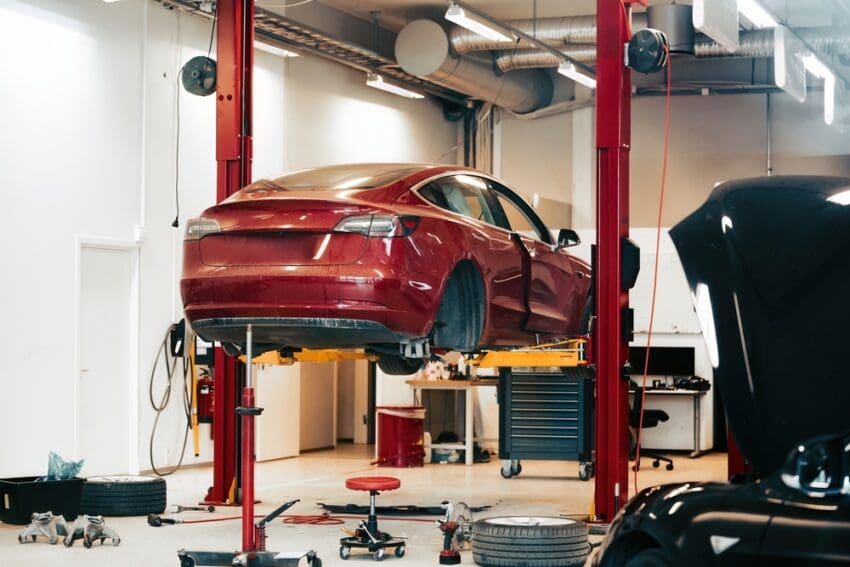
Tips for Maintaining Your Electric Vehicle for Reliability and Performance
Owning an electric car feels almost effortless—until a warning light flashes and suddenly you’re searching for the tyre gauge.
In this quick guide, you’ll learn practical habits that keep batteries healthy, software current, and tyres gripping properly, so each drive stays smooth and predictable.
If you ever need a professional eye, the technicians at peninsulaautoclinic.com.au outline what to check during scheduled inspections between routine updates and long road trips alike.
Check Battery Health
Just like a beating heart, the battery defines your EV’s vitality, so periodic health checks prevent unpleasant surprises and safeguard the vehicle’s long-term range credibility.
State of Health Scans
Service centers or OBD dongles reveal State-of-Health percentages, telling you exactly how much original capacity remains and letting you schedule repairs before noticeable degradation appears.
Track Charging History
Review the car’s in-app charging statistics to see how often it fast-charged or stayed at full, patterns strongly correlated with accelerated lithium-ion wear overuse issues.
Leverage Warranty Coverage
Before warranty milestones expire, schedule an official diagnostic and written report; documentation today simplifies any future battery replacement negotiation, protecting your pocketbook later from shocks.
Rotate and Inflate Tires
Electric vehicles weigh more and deliver instant torque, so tires endure unique stresses; consistent rotation and correct inflation preserve efficiency, quietness, and safety every season.
- Follow manufacturer intervals Rotate every six thousand miles or earlier, equalizing tread wear created by powerful electric acceleration and regenerative braking forces.
- Check pressure monthly Use a digital gauge before driving; cold readings ensure accuracy and maximize range by reducing rolling resistance.
- Adjust for temperature swings Winter pressure drops steal efficiency, whereas summer expansion risks uneven contact, so modify PSI accordingly.
- Invest in EV-rated tires Reinforced sidewalls and low noise compounds tolerate heavier loads while maintaining quiet cabin comfort and optimal traction.
Finishing each rotation appointment with a fresh alignment inspection prevents cupping, preserves battery range, and guarantees the steering feel you loved on delivery day forever.
Update Tesla Firmware
Tesla treats software like hardware, continuously improving efficiency, charging curves, and entertainment; installing updates quickly per Tesla’s official page makes your car better overnight automatically.
Enable Automatic Downloads
Connect to reliable home Wi-Fi, set scheduled install times, and wake up to new features without interrupting evening errands or incurring cellular data charges ever.
Read Release Notes
Each build’s on-screen changelog explains tweaks to Autopilot, cabin pre-conditioning, and battery management, letting you adapt habits and maximize the freshly delivered improvements for safety.
Install Promptly
Delaying patches risks missing efficiency gains or critical security fixes; start the update before bedtime and wake to a refreshed, fully optimized ride next morning.
Limit Rapid DC Charging
DC fast charging is convenient for road trips, yet frequent use builds heat and microscopic damage; moderating sessions preserves long-term capacity and minimizes utility costs.
- Favor Level 2 at home Slower overnight charging gently balances cells and avoids expensive demand fees appearing on public networks.
- Precondition the pack Warm or cool battery before plugging into high-power chargers, reducing internal resistance and heat generation.
- Unplug around 80 percent The final twenty percent charges slower yet stresses cells more, so resume driving when range comfortably meets the next stop.
- Monitor station reliability Choose well-maintained hardware; the AFDC maintenance guide shows why uptime matters for both owners and drivers.
Combining these habits with the car’s charge-limit setting ensures weekend road-trip flexibility without sacrificing the everyday battery health you’ll rely on for years to come.
Service Regenerative Brakes
Regenerative braking saves energy and pad wear, but sensors, fluid, and mechanical backups still require periodic attention to guarantee safe, predictable stopping in every condition.
Inspect Electronic Components
Technicians test wheel-speed sensors and inverter controls ensuring regeneration blends smoothly with friction brakes, eliminating jerky transitions that confuse passengers during city traffic daily drives.
Flush Brake Fluid
Moisture-laden fluid corrodes calipers over time; two-year replacement intervals keep hydraulic backups crisp for emergency stops when regeneration disengages below walking speeds or cold mornings.
Clean Idle Rotors
Because pads engage less, surface rust forms quickly; periodic spirited stops or professional cleaning remove oxidation and maintain a mirror finish on rotors for longevity.
Monitor Thermal Management
Battery temperature determines everything from charge rate to lifespan; modern thermal management systems work hard, yet they depend on sensors and coolant you must maintain.
Watch Temperature Readouts
Dash or app gauges rising above forty-five Celsius while driving indicate cooling loop struggles; schedule service before cells risk accelerated degradation or thermal runaway events.
Replace Coolant On Time
Coolant ages like engine oil, losing corrosion inhibitors and viscosity; follow manual intervals to maintain pump longevity and even temperature distribution throughout the battery pack.
Keep Vents Clear
Interior battery intake vents can clog with dust or pet hair; vacuum monthly so airflow remains unobstructed during rapid charging sessions or summer road trips.
Balance Daily Charging
Smart charging habits prevent calendar aging and voltage stress; keeping energy between twenty and eighty percent delivers ideal convenience, longevity, and peace of mind daily.
- Set upper limit Use the onboard slider to cap daily charges at eighty percent, automatically avoiding high-voltage stress while still meeting commuting needs.
- Avoid deep discharges Plug in around twenty percent to prevent the battery management system from triggering protective low-state cutoffs that reduce available power.
- Schedule off-peak hours Timed charging saves money and lets the pack warm gently, arriving at target percentage right before departure.
- Full charge occasionally Once monthly, calibrate the battery management system with a one-hundred-percent session to maintain accurate range estimation.
Combining these guidelines with climate-controlled garage storage keeps lithium-ion chemistry within its comfort zone, extending range retention and resale value over your ownership journey significantly.
Practice Smooth Stops
Smooth deceleration maximizes regenerative capture and reduces wear on tires and pads; mastering anticipation quickly becomes second nature and rewards you with extra free miles.
- Use a one-pedal driving Lift accelerator early to let regeneration handle most slowing, reserving hydraulic brakes for final creep or emergencies.
- Read traffic flow Scan several vehicles ahead, easing off power gradually rather than reacting late with aggressive stopping.
- Dial regen strength Choose a setting you can modulate comfortably; higher levels return more energy but require refined pedal finesse.
- Practice in empty lots Low-risk environments build muscle memory, ensuring smooth transitions during crowded commutes.
Over time, passengers enjoy gentler rides, your brake rotors stay shiny, and the battery thanks you with every kilowatt recaptured instead of wasted as heat.
Charge Ahead
Consistent attention to these fundamentals keeps your EV dependable, efficient and safe. You avoid costly surprises while preserving range and long-term resale value. Schedule routine checks, note small changes immediately, and consult professionals when metrics stray outside norms.





